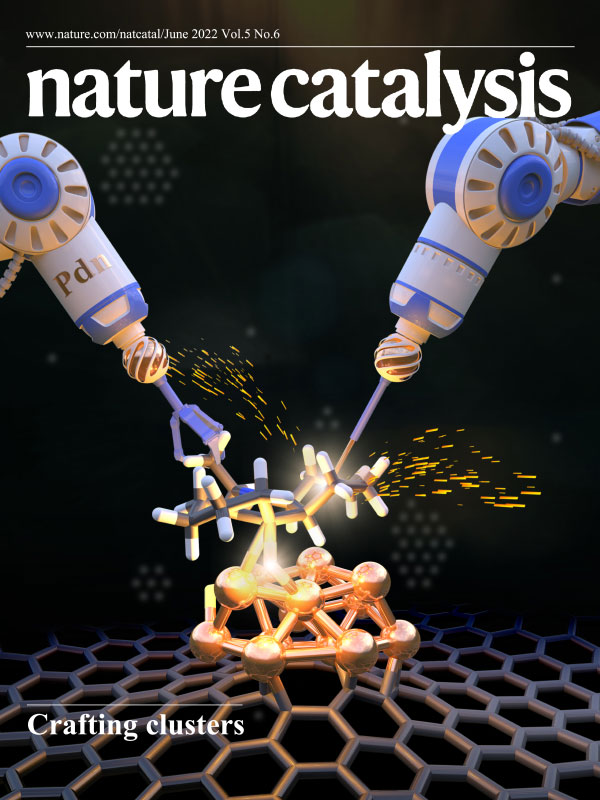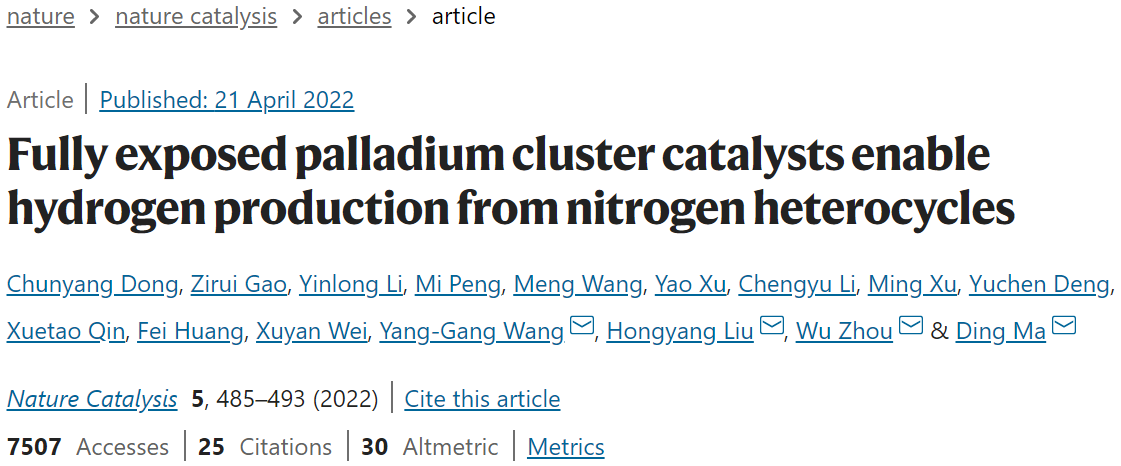Nature Catalysis中稿封面
Jun 26,2022
The image designed by Sphere Studio is selected as the Cover of Nature Catalysis in June.
Exploring structure sensitivity for sub-nanometre metal catalysts poses remarkable challenges. Here, Yang-Gang Wang, Hongyang Liu, Wu Zhou, Ding Ma and colleagues tackle this challenge for supported palladium clusters as catalyst for the dehydrogenation of dodecahydro-N-ethylcarbazole, a representative liquid organic hydrogen carrier.

Abstract
The size of supported metal species is known to have a profound influence on their catalytic activity. However, this structure sensitivity remains ambiguous for metals at the atomic scale due to the lack of single-atom sensitive and statistically significant quantification methods. Here we overcome this difficulty to quantify the catalytic contribution of various surface palladium species, ranging from single atoms to sub-nanometre clusters and nanoparticles, in the dehydrogenation of dodecahydro-N-ethylcarbazole, a reaction of importance for H2 transportation and utilization. We show that the optimal site is a fully exposed palladium cluster with an average Pd–Pd coordination number of ∼4.4, favouring both the activation of reactants and desorption of products, whereas palladium single atoms are almost inactive. Our study highlights that for certain catalytic reactions, the construction of fully exposed metal clusters without the presence of spectators (that is, palladium single atoms in this work) could help to maximize the reactivity and the atomic efficiency of noble metals.

PREV: Joule中稿封面
NEXT: Science官网首页概念图

